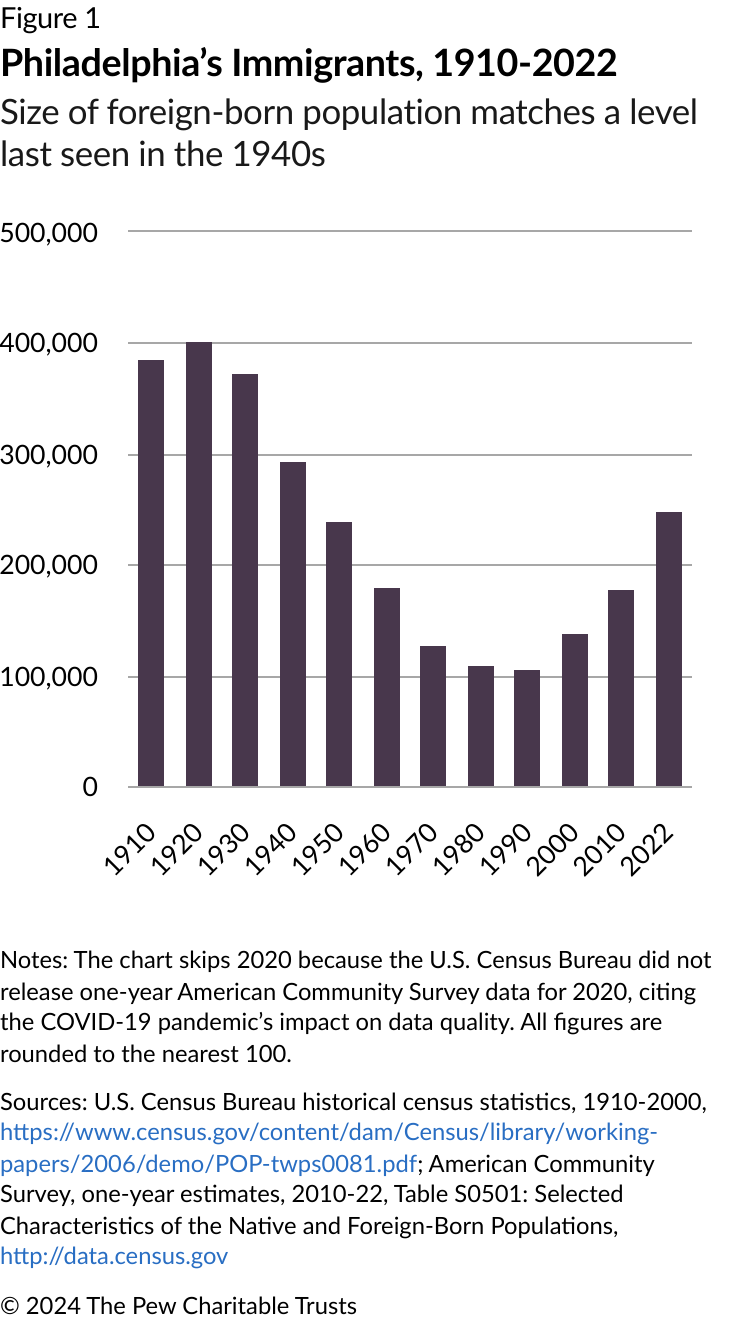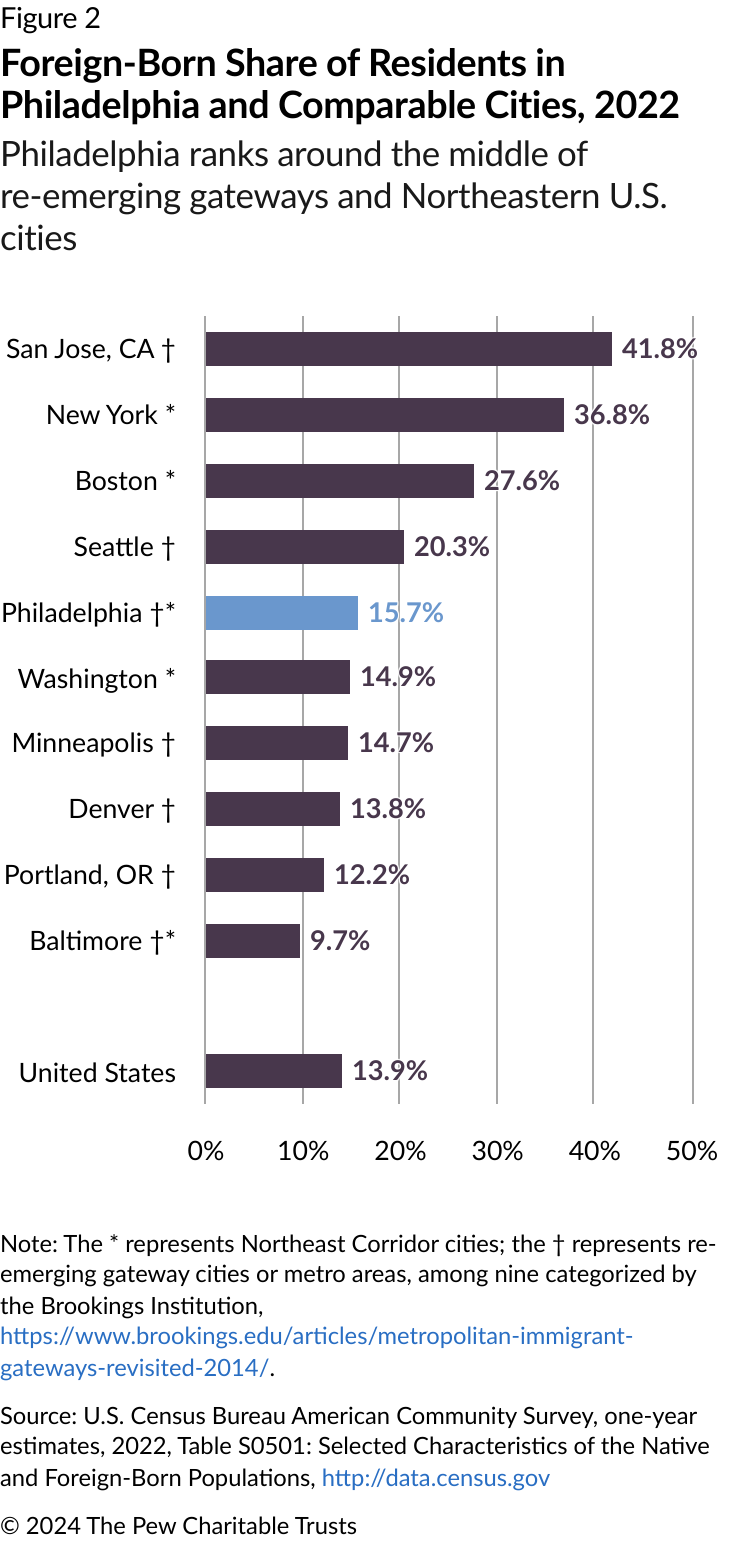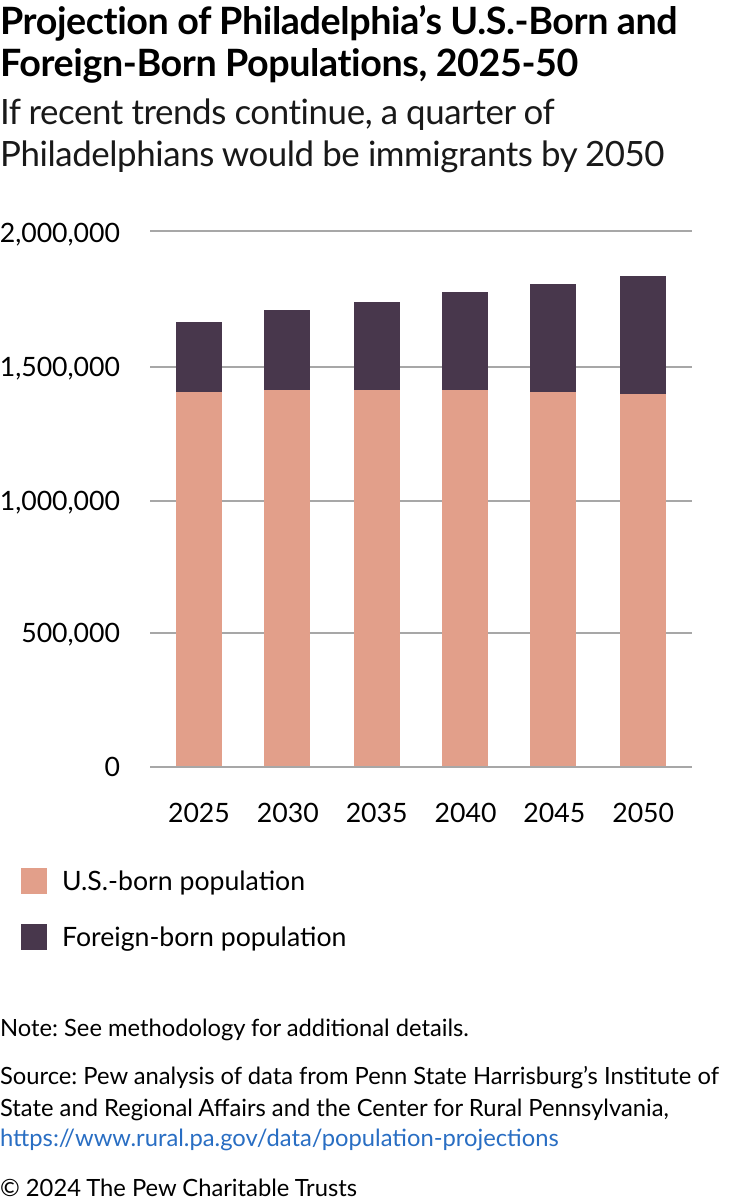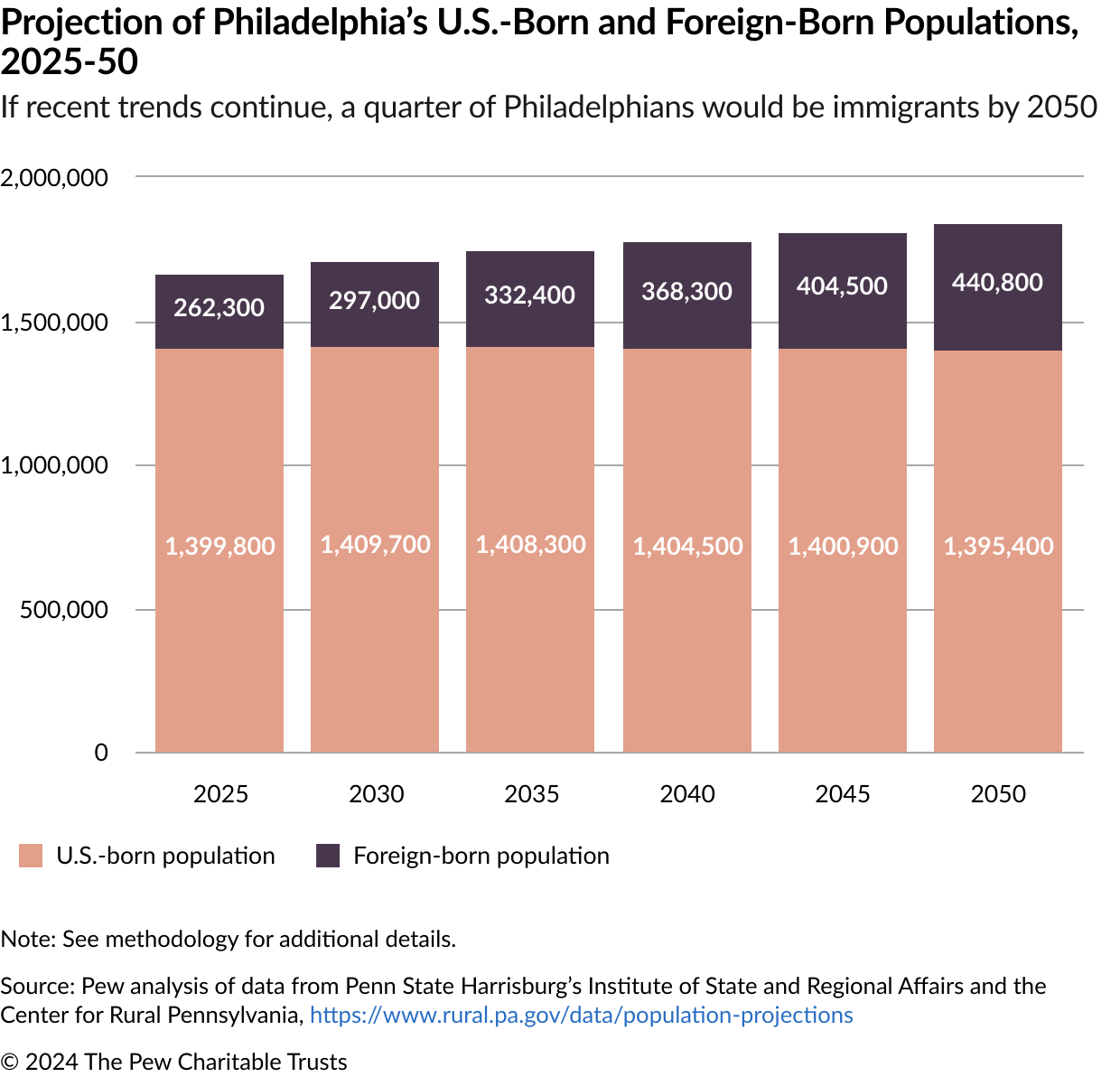Immigrants Boost Philadelphia's Growth
Noteworthy

Philadelphia’s immigrant population has steadily grown over the past three decades, reaching levels not seen since the mid-20th century, even while the U.S.-born population has experienced some decline. If these trends continue, immigrants may continue to be the primary drivers of the city’s population growth in the coming years, according to The Pew Charitable Trusts’ analysis of projections by the Penn State Harrisburg’s Institute of State and Regional Affairs and the Center for Rural Pennsylvania.
In the early 2000s, the Philadelphia metro area reemerged as a “gateway” or migration entry point for immigrants, according to a Brookings Institution analysis. While Philadelphia today still is not a top U.S. destination for people born overseas, the city’s immigrant population grew by 80% from 2000 to 2022, with immigrants in 2022 making up 15.7% of the population, the greatest percentage since 1940.
These population projections raise the question of whether foreign-born residents (first-generation Americans) and the U.S.-born children of immigrants (second-generation Americans) can sustain Philadelphia’s population growth and economy over the long term. The National Academies of Sciences, Engineering, and Medicine found that second-generation Americans have been, on average, the strongest per-capita contributors to national and state economies and tax bases. That research, based on decades of demographic data, demonstrates that tax payments from second-generation Americans outweigh the assumed net costs of public services incurred by their immigrant parents. Additionally, it’s worth noting that while these parents may have faced challenges, they tended to set up the next generation for significant socioeconomic progress, according to data from Pew Research Center and others.
It’s possible that Philadelphia’s future growth will depend on whether the city can continue to gain immigrants while also holding onto its second-generation Americans. “We’ve seen that U.S.-born residents have a history of leaving the city,” said Elinor Haider, who directs Pew’s Philadelphia research and policy initiative. “Although the second generation’s share of the population has held steady over the past two decades, it’s worth noting that many of these second-generation Americans were teens and young adults during that time period. Keeping them in the city as adults could prove challenging.”















